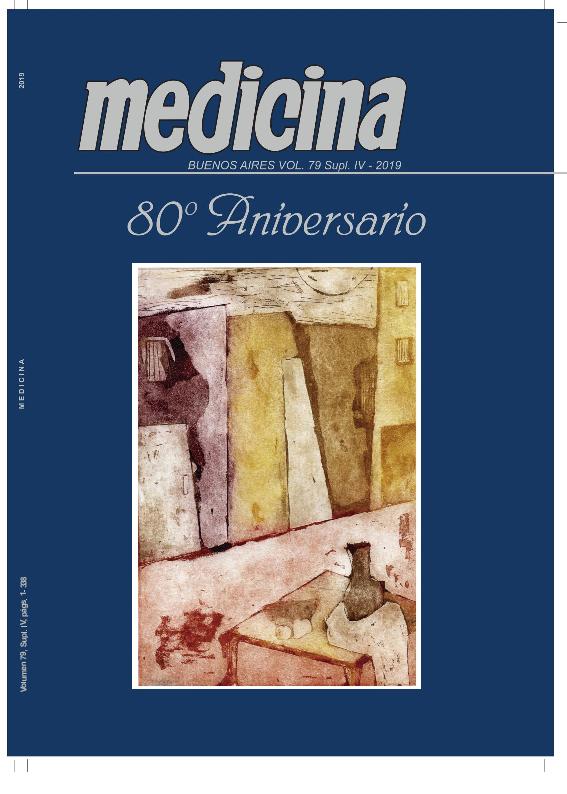Evento
Development of quantitative real-time polymerase chain reaction coupled with high-resolution melting (HRM- qPCR) analysis for the diagnosis of Trypanosoma evansi in Canis lupus familiaris
Muñoz Calderon, Arturo Alejandro ; Lucero, Raul Horacio; Brusés, Bettina Laura; Formichelli, Laura Belén; Schijman, Alejandro Gabriel
; Lucero, Raul Horacio; Brusés, Bettina Laura; Formichelli, Laura Belén; Schijman, Alejandro Gabriel
 ; Lucero, Raul Horacio; Brusés, Bettina Laura; Formichelli, Laura Belén; Schijman, Alejandro Gabriel
; Lucero, Raul Horacio; Brusés, Bettina Laura; Formichelli, Laura Belén; Schijman, Alejandro Gabriel
Tipo del evento:
Reunión
Nombre del evento:
LXIV Reunión Anual de la Sociedad Argentina de Investigación Clínica; LI Reunión Anual de la Asociación Argentina de Farmacología Experimenta; XXI Reunión Anual de la Sociedad Argentina de Biología; XXXI Reunión Anual de la Sociedad Argentina de Protozoología; IX Reunión Anual de la Asociación Argentina de Nanomedicinas; VI Reunión Científica Regional de la Asociación Argentina de Ciencia y Tecnología de Animales de Laboratorio
Fecha del evento:
13/11/2019
Institución Organizadora:
Sociedad Argentina de Investigación Clínica;
Asociación Argentina de Farmacología Experimenta;
Sociedad Argentina de Biología;
Sociedad Argentina de Protozoología;
Asociación Argentina de Nanomedicinas;
Asociación Argentina de Ciencia y Tecnología de Animales de Laboratorio;
Título de la revista:
Medicina (Buenos Aires)
Editorial:
Fundación Revista Medicina
ISSN:
0025-7680
e-ISSN:
1669-9106
Idioma:
Inglés
Clasificación temática:
Resumen
The Trypanosomiasis caused by Trypanosoma evansi affects a wide diversity of mammals being zoonotic potential in man, with a case reported in 2005 in India. This haemoflagellate protozoan can parasitize most domestic mammals, being horses, dogs, and cattle the most affected species. Diagnostic tools for this parasitic infection are scarce, even though this trypanosomiasis can be very lethal if the animals are not treated. This work reports the development of a multi-diagnosis assay based on qPCR coupled to HRM that differentiates infections with diverse species of trypanosomatids and Leishmanias with zoonotic potential in peripheral blood samples from canines. The molecular marker selected was the Internal Transcribed Spacer (ITS1) present in the ribosomal RNA locus. This marker is highly conserved and present size variability among trypanosomes species. The results using as a template gDNA of different trypanosomatid species showed specific amplification with distinctive patterns in Melting Curves for T. evansi, T. cruzi, T. brucei, T. rangeli and different species of Leishmanias. This was confirmed in agarose gels, resulting in single or multiple bands with a size range from 250 to 480 bp. Its clinical validation was carried out on 14 peripheral blood samples from domestic canines from northeastern Argentina. The results showed positivity for infection with T. evansi in 36 % of the samples. Additionally, through this standardized technique, in one sample it could be detected infection with Leishmania infantum with low parasitemia, confirmed by sequencing and subsequent alignment of the ITS1 region with reference sequences. Therefore, molecular diagnosis of animal trypanosomiasis by HRM-qPCR represents a viable tool for wide-scale epidemiological studies, which may be used to report the true prevalence of the infection and allow implementation strategies to control these zoonotic diseases in Argentina, as well as the rest of South America, Africa, and Asia.
Archivos asociados
Licencia
Identificadores
Colecciones
Eventos(INGEBI)
Eventos de INST.DE INVEST.EN ING.GENETICA Y BIOL.MOLECULAR "DR. HECTOR N TORRES"
Eventos de INST.DE INVEST.EN ING.GENETICA Y BIOL.MOLECULAR "DR. HECTOR N TORRES"
Citación
Development of quantitative real-time polymerase chain reaction coupled with high-resolution melting (HRM- qPCR) analysis for the diagnosis of Trypanosoma evansi in Canis lupus familiaris; LXIV Reunión Anual de la Sociedad Argentina de Investigación Clínica; LI Reunión Anual de la Asociación Argentina de Farmacología Experimenta; XXI Reunión Anual de la Sociedad Argentina de Biología; XXXI Reunión Anual de la Sociedad Argentina de Protozoología; IX Reunión Anual de la Asociación Argentina de Nanomedicinas; VI Reunión Científica Regional de la Asociación Argentina de Ciencia y Tecnología de Animales de Laboratorio; Mar del Plata; Argentina; 2019; 229-229
Compartir



